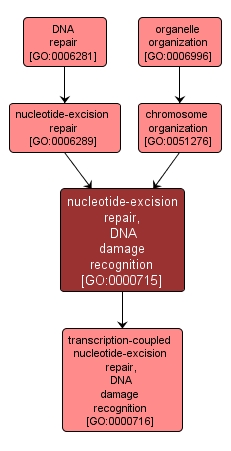GO TERM SUMMARY
|
| Name: |
nucleotide-excision repair, DNA damage recognition |
| Acc: |
GO:0000715 |
| Aspect: |
Biological Process |
| Desc: |
The identification of lesions in DNA, such as pyrimidine-dimers, intrastrand cross-links, and bulky adducts. The wide range of substrate specificity suggests the repair complex recognizes distortions in the DNA helix. |
Synonyms:
- pyrimidine-dimer repair, DNA damage recognition
|
|

|
INTERACTIVE GO GRAPH
|














